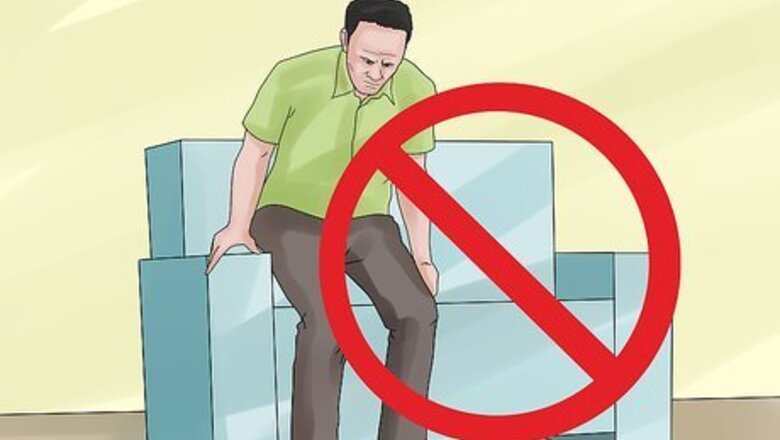
views
Faking Pain in the Ankle
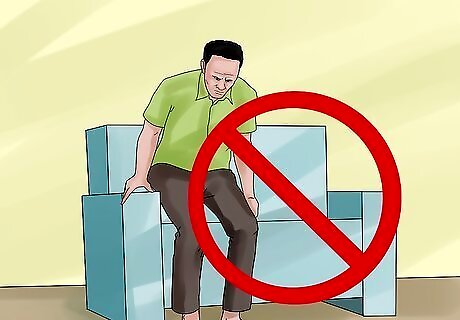
Avoid putting weight on your foot. An ankle sprain would cause pain when you put weight on your foot. To fake a sprain, you should walk with a limp and avoid putting too much weight on your ankle.
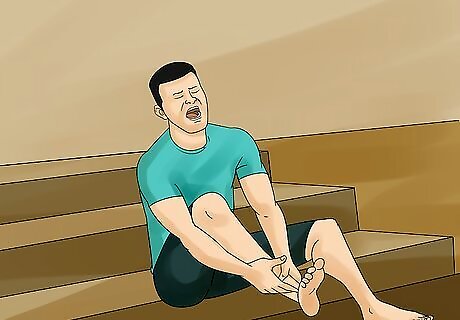
Wince in pain when your ankle is moved. To seem convincing, you should pretend that moving your ankle provides you a moderate amount of pain. Your ankle is likely to be examined by a teacher, parent, or healthcare provider. If you mistakenly move it, cover up with a painful cry, or clutch your ankle. They will begin by moving your ankle from side by side. When this happens, show that it is painful, but do not overact. Overacting may seem less convincing or result in your family or doctor running tests to determine the problem.

Limit your range of motion. Avoid moving your ankle from side to side or up and down as much as possible. If a doctor or healthcare provider looks at your ankle they might compare its range of motion to that of your unhurt ankle. A true sprain would limit your range of motion in the injured ankle.
Bandaging Your Ankle
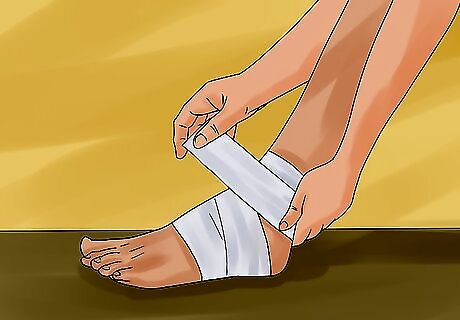
Wrap your ankle in a bandage. If you are trying to fake a sprain outside of a doctor’s office, it is best to appear as though you have seen a doctor. A doctor would typically wrap your ankle in a bandage to provide support and limit your motion. Start wrapping your ankle near the bridge of your foot. Continue to wrap the bandage around your foot and ankle until you reach the top of your ankle. Secure the bandage with the provided pin. You can find a stretch bandage at most general or drug stores.
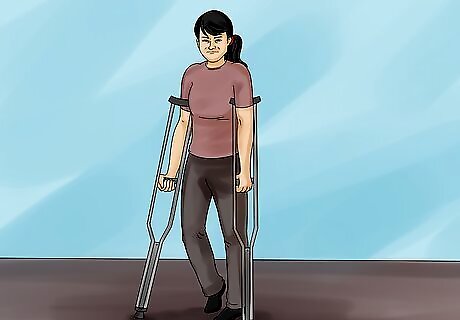
Use crutches to walk. A doctor would typically advise that you avoid putting weight on your foot for two to six weeks after spraining your ankle. The best way to do this is by using crutches. You can find crutches at a medical supply store; however, keep in mind that your health insurance will not cover this cost without a doctor’s prescription.
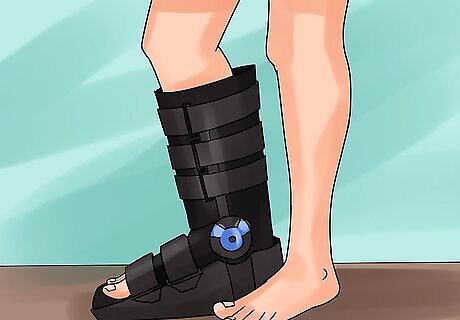
Wear a walking boot. A more serious sprain might require a boot to help support the foot and more intensely limit your range of motion. You can also find a boot at a medical supply store.
Remaining Convincing

Decide on a story and stick to it. You typically sprain an ankle when you roll it. This can happen while walking, running, jumping, falling, or playing a sport. Whenever story you make up, be sure to stick to it. Decide on the details of your story before telling it. Changing your story can lead to someone discovering that you are faking a sprained ankle.
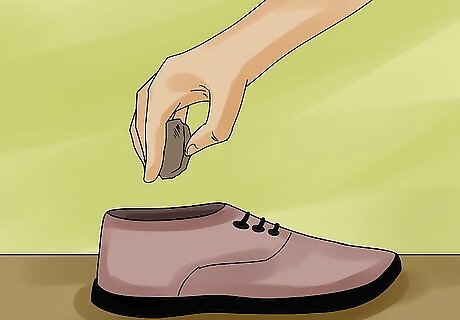
Place a rock in your shoe to remind you to limp. Since you are faking an injury, it may be difficult to remember that you are supposed to limp when you walk. You can place a rock, or something small but uncomfortable, in your shoe to help remind you that you should be walking with a limp.

Avoid telling people that your injury is fake. You should not trust anyone to keep your secret. Therefore, if you really want everyone to believe that your ankle is really sprained, you should refrain from telling anyone the truth.

Read up on ankle sprains. Before you fake a sprained ankle, you should do your research. Read about what a sprained ankle looks and feels like. Read about recovery times and treatments. The more you know about sprained ankles, the easier it will be to fake a sprained ankle.

Continue faking the injury. It takes most people between two and six weeks to recover from a sprained ankle if they follow their doctor’s medical advice. You should remember to continue the act for several weeks. It is also wise to gradually “recover” instead of instantly recovering. To “slowly recover”, gradually eliminate the wrap, brace, or crutches. Begin to put weight on your ankle again. Take one to two weeks to “fully recover.”


















Comments
0 comment